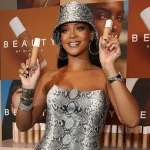Virtual Reality in Fashion: How VR is Revolutionizing Shopping Experiences
Market Differentiation and Competitive Edge
In the competitive retail landscape, differentiation is crucial. Virtual reality offers businesses a unique opportunity to stand out by creating unique shopping experiences. Retailers can use VR to craft distinct brand interactions that attract tech-savvy customers and create buzz. These innovative experiences can lead to increased customer loyalty, as VR provides a memorable and engaging way for consumers to connect with brands. For retailers, the competitive advantage lies in early adoption of VR technology. By offering innovative solutions, they position themselves ahead of competitors who rely solely on traditional methods, thus establishing market leadership in a tech-forward retail environment.
Optimizing Customer Satisfaction with VR
Virtual reality in fashion offers personalized experiences and more informed purchasing decisions. It also allows for continuous improvements based on customer feedback.
The Role of Digital Information in Customer Decisions
Virtual reality enhances the shopping experience by providing detailed product information that enhances consumer decisions. Shoppers can examine garments in a 360-degree view, understanding texture, fit, and style more effectively. This immersive experience replicates in-store shopping and reduces the uncertainty commonly associated with online purchases.
Users can compare different styles and sizes virtually, making informed decisions without the need to order multiple items for comparison. VR provides real-time updates on inventory and pricing, reducing disappointments due to unavailable items. The comprehensive presentation of options and availability streamlines the journey from interest to purchase, elevating customer satisfaction.
Feedback Loops and Continuous Improvement
Customer feedback in VR environments contributes significantly to refining the virtual shopping experience. Consumers can voice their opinions on fit, usability, and technological aspects directly within the platform, allowing for real-time adjustments and improvements.
Retailers can analyze this feedback to identify emerging preferences and address glitches promptly. This continuous interaction fosters a more responsive shopping environment, tuned to consumer needs and expectations. Utilizing VR for proactive adjustments based on detailed user feedback ensures the shopping experience remains fresh and engaging.
As user preferences evolve, VR platforms must adapt quickly, aligning their virtual offerings with the desires of their audience. This adaptability showcases the dynamic nature of VR-enabled fashion retail, supporting long-term consumer interest and satisfaction.
VR Adoption Challenges and Data Privacy
Adopting virtual reality in the fashion industry presents unique challenges. Key concerns include the technical and usability barriers that limit widespread access, and the complexities of protecting consumer data within immersive virtual environments. Addressing these issues is crucial for successful integration of VR in fashion retail.
Overcoming Technical and Usability Barriers
Virtual reality offers significant potential for fashion brands. Yet, its adoption is hindered by several technical challenges. High costs associated with VR hardware and development can restrict access for smaller retailers.
Additionally, the lack of standardized software platforms can complicate VR implementation. Usability also plays a role. Consumers might encounter interface complexities, and ensuring a user-friendly experience is essential to encourage adoption.
Quality of VR content is crucial, as lower quality can detract from the immersive experience. Retailers must invest in both high-performing technology and intuitive interfaces. By addressing these barriers, fashion companies can improve user engagement and make immersive shopping experiences more accessible.
Navigating the Complex Landscape of Data Privacy
Data privacy is a critical issue in virtual environments. With VR, numerous data points are generated, including personal preferences and biometric information. Protecting this data from breaches and misuse is paramount.
Regulations vary across regions, creating challenges for global fashion brands. Businesses must comply with laws like GDPR in Europe, which mandate strict data handling practices. Transparency about data collection and usage builds consumer trust.
Implementing robust security measures is vital to safeguard consumer data. Encryption technologies and privacy protocols can help in minimizing risks. Furthermore, informing consumers about their privacy rights while using VR applications ensures they remain informed and protected at every interaction.



